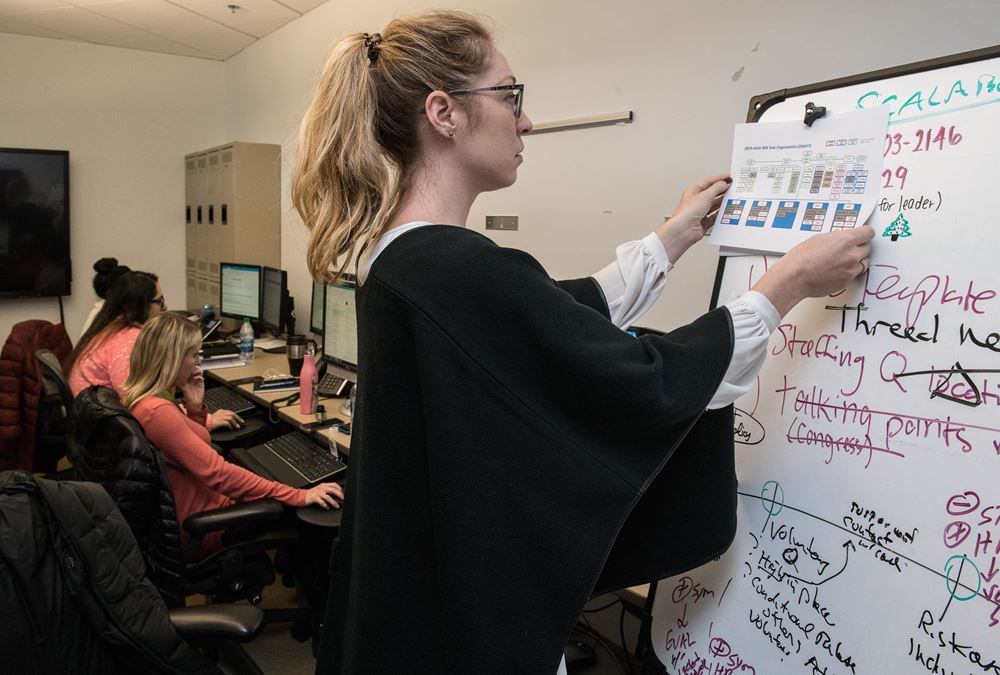- Home
- Business Processes
- Industry Knowledge
- Aerospace Industry
- Automotive Industry
- Banking Domain
- BFSI Industry
- Consumer/ FMCG Industry
- Chemicals Industry
- Engineering & Construction
- Energy Industry
- Education Domain
- Finance Domain
- Hospitality Domain
- Healthcare Industry
- Insurance Domain
- Retail Industry
- Travel and Tourism Domain
- Telecom Industry
- Leadership Skills
- eLearning
- Home
- Leadership
- Communication Skills
- Trait Theories - Application
Trait Theories - Application
Trait theories of leadership explain the leadership traits that have been studied to determine what makes certain people great leaders. The practical application of the theory is looking at how the leader‟s behavior affects their subjects.
The trait approach is very different from the other leadership approaches as it concentrates on the leader and not on the situation or the followers or other circumstances or factors. This approach emphasizes that having a leader with a certain set of traits is critical for a leader to be effective.
Workplace Application:
We have already discussed some shortcomings of the trait theory of leadership in the previous article. In spite of these limitations, the trait theories provides valuable information about leadership and can be practically applied by professionals at all levels and in all types of organizations to perform a self-assessment and compare you traits with those who are successful in a specific career. Most of the assessment devices that result from trait theory are self-report type tests. The person being tested responds to questions and these responses may or may not be accurate.
A great deal of research has gone into the determination of traits that are helpful in specific types of jobs and there exists many career type assessment measures that look at personality traits and compare your traits with those who are successful in a specific career. The rationale behind these tests is the assumption that if most successful and happy professionals possess specific traits (example are conscientious, agreeable, understanding) and based on the assessment you conclude that you also have these same traits, one could conclude that you are likely to succeed as a professional in same career field.
If you look at the assumptions and theoretical conclusions that were made under the Trait Theories of Leadership, you may start to notice some commonalities. Please refer to the Trait Theory Development Timeline in one of the previous article where in the table we have listed various traits by various researchers as they evolved over the timeline. Many different researchers, from different schools of thought have studied the aspects of personality and traits and they concluded that there exists several interesting similarities. While different theorists may use different terminology, some common factors or personality traits have shown up in a rather consistent pattern.
Given below is the list of some practical applications of the trait theory of leadership:
- Use assessment to identify and compare the traits that an individual possess and use trait measures to assess your own characteristics.
- Compare the traits leaders’ exhibit and use assessments to see who has these traits.
- Organizations can use personality assessment instruments to identify how individuals will fit within their organizations. This helps them select the right candidate and in turn helps increasing organizational effectiveness.
- Trait information can suggest areas in which employees personal characteristics are beneficial to the organization.
- The trait approach can be used for personal awareness and development by analyzing strengths and weaknesses to gain a better understanding of their traits.
- Use personality tests and other similar questionnaires to gain insight into your current capabilities with regard to certain traits that are deemed important for leadership.
- Use assessment tests to understand your strengths and weaknesses with regard to leadership.
- Use assessment to determine careers or development needs that fit your personality and therefore offers you a greater chance of success.
- Use the assessment results to understand the traits that are good to have if one aspires for a leadership position.
- Use the results to develop a deeper understanding of how your personality based on traits affect others in the organization.
- Identify the areas in which you may want to get more training to enhance your levels.
List of Personality Tests based on Trait Theory of Leadership:
Various organizations use a various types of questionnaires to measure individuals’ personality characteristics or traits. Given below are some commonly used standard personality measures that are used to gather valuable information about individual’s unique attributes for leadership roles and to analyze the best fit for individual in the organization.
- Minnesota Multiphasic Personality Inventory (MMPI-2)
- Myers-Briggs Type Indicator®
- Big5 Personality Test
- WorkPlace Big Five Profile (WB5P)
- Costa and McCrae’s NEO PI-R, also called the NEO
- TechnoFunc’s Leadership Trait Quiz (TLTQ)
TechnoFunc’s Leadership Trait Quiz (TLTQ):
We have created a small quiz as an example that can be used to assess your personal leadership characteristics. This quiz measures an individual’s traits and points the individual to the areas in which that individual may have special strengths or weaknesses. By taking this quiz you can gain a quick understanding of how trait measures are used for leadership assessment. This quiz will also give you a flavor of personality tests that are used by employers to measure/judge leadership traits of the potential hires.
Related Links
You May Also Like
-
Have you ever resonated that there seem to be as many different ways to lead people as there have been great leaders? When we recall the success of Mahatma Gandhi, Nelson Mandela, Abraham Lincoln, Napoleon Bonaparte to Steve Jobs and Jack Welch, we also notice that they all used different approaches that were suitable to their specific situations and circumstances. Over the last century, researchers and psychologists have developed simple ways to describe the “Styles of leadership” and in this section, we will explore these commonly known leadership styles.
-
Management theories are the recommended management strategies that enable us to better understand and approach management. Many management frameworks and guidelines were developed during the last four decades.
-
Functional leadership theory addresses specific leader behaviors that are expected to contribute most to the organizational effectiveness by focusing on how the leadership process occurs. The leader should ensure that all needs of the group get addressed.
-
Communication has as its central objective the transmission of meaning. The process of communication is successful only when the receiver understands an idea as the sender intended it. How does a message or an idea travel from one person to another? To transmit our message, we engage in a sensitive and complex process of communication, with different elements like sender, message, channels, receiver, noise, and feedback.
-
Authentic leadership is a new approach to leadership in which leaders are genuine, self-aware, transparent, build honest relationships, and work on an ethical foundation. Authenticity is one of the core values of leadership. Authentic leaders have truthful self-concepts and they inspire by promoting openness by acting in a real, genuine, and sincere way. Authenticity requires self-awareness and the ability to act in accordance with one's true self.
-
Early studies on leadership were done at Ohio State University using the Leader Behavior Description Questionnaire to identify the leader's observable behaviors. Ohio State study on leadership found two behavioral characteristics of leadership - people-oriented (consideration) and task-oriented (initiating structure) leadership style.
-
Generating Ideas using Brainstorming
The brainstorming technique was developed by Alex F. Osborn in 1957 and brainstorming means where a team of members generates a large amount of alternative fruitful ideas on a specific problem without any criticism and then evaluates each idea in terms of their pros and cons. Brainstorming techniques fall into four broad categories: visioning, exploring, modifying, and experimenting.
-
Trait Theory of Leadership is based on the assumption that people are born with inherited traits and some traits are particularly suited to leadership. The theory aims to discover specific leadership & personality traits and characteristics proven to predict the likelihood of success or failure of a leader.
-
All the teams are dynamic in nature and they take time to come together, they form, develop, and grow in stages, over a period of time. Teams go through five progressive stages: Forming, Storming, Norming, Performing and Adjourning. In this article, we want to introduce you to these stages of team development and certain strategies that you can use to help the team grow and develop in each of these stages.
-
The cognitive resource theory states the influence of the leader's resources on his or her reaction to stress. The cognitive resources of a leader are experience, intelligence, competence, and task-relevant knowledge. Stress is common in resource managing situations, and this cognitive theory emphasizes how intelligence and experience are each best under different stress situations. This theory is the reconceptualization of the Fiedler model.
Explore Our Free Training Articles or
Sign Up to Start With Our eLearning Courses

About Us
Learning
© 2023 TechnoFunc, All Rights Reserved










